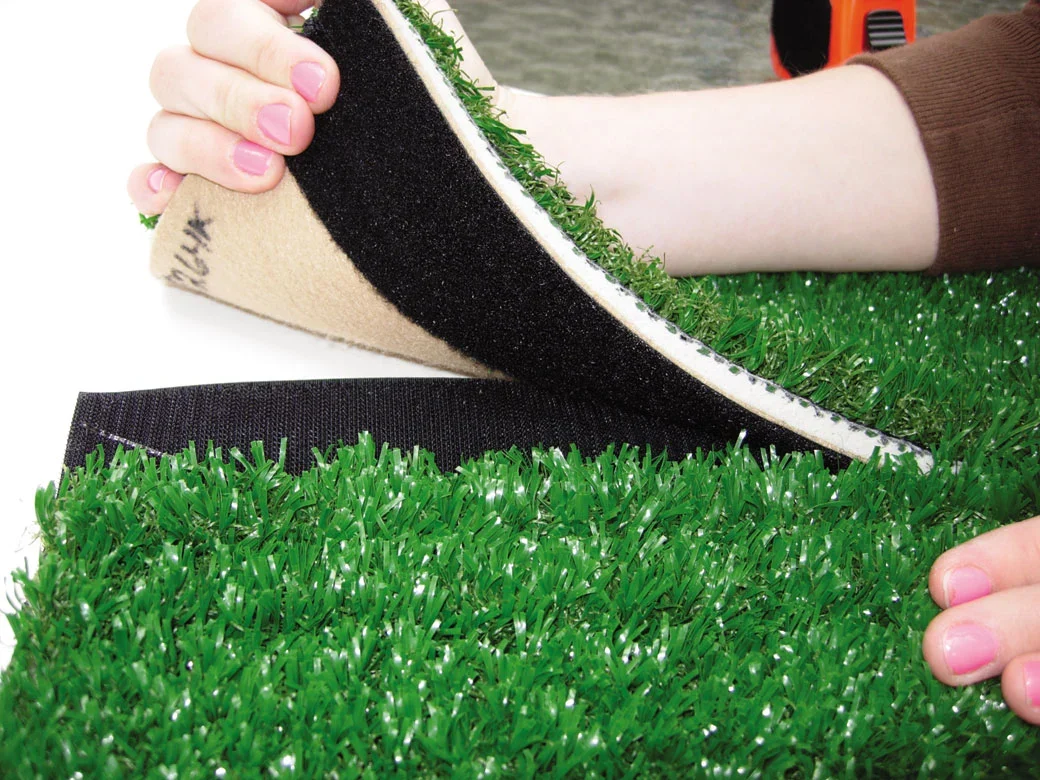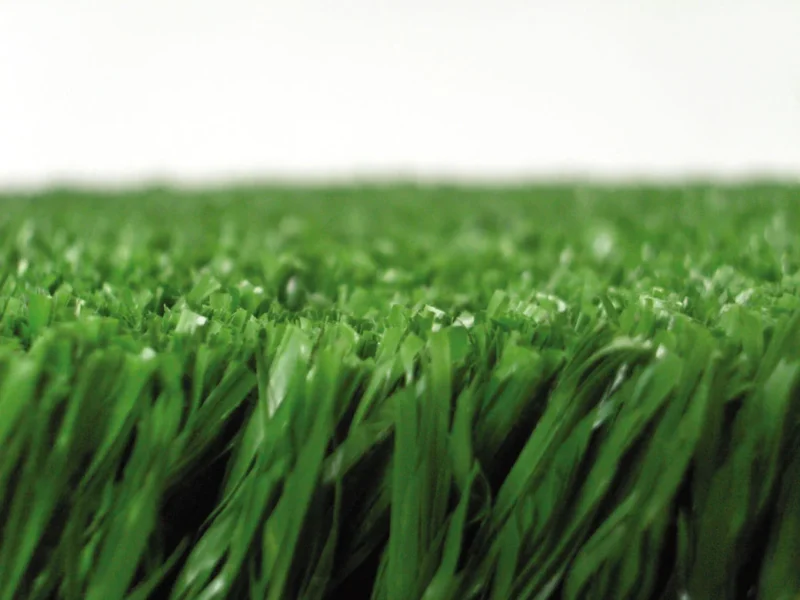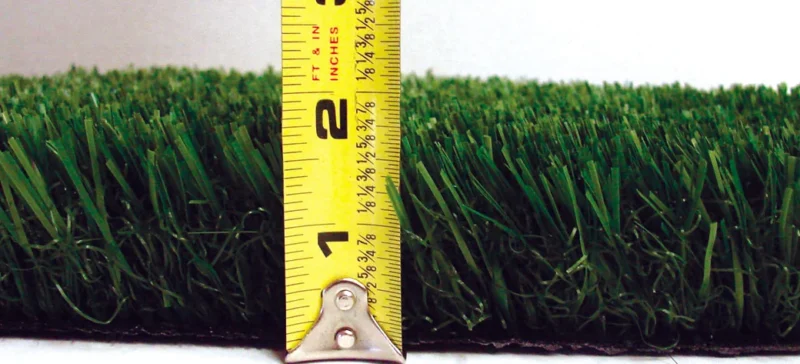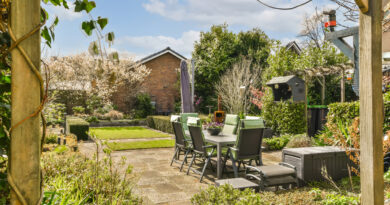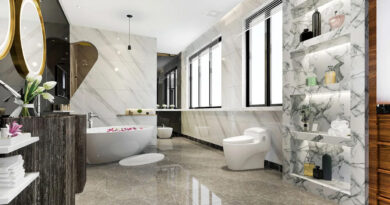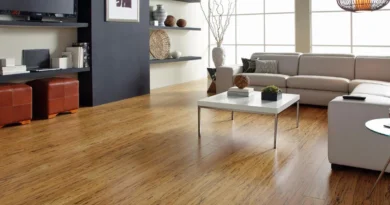Artificial grass / turf for sports fields
Among many synthetic materials which exist nowadays in our surroundings, we often find
artificial grass.
Economic justification for changing natural grass with artificial on sports fields is
indisputable. Natural grass, apart from expensive maintaining (watering, mowing, fertilising),
needs rest and recovery from walking and running on. On the other hand, artificial grass can
be used 24/7 in all weather conditions. Players’ safety and a comfortable game are guaranteed
as on the natural grass. The only drawback of artificial grass comparing it to the natural one is
a higher warm-up during sunny days and a substantial heat emission during hot summer
months.
Production technology of artificial grass
Production technology of artificial grass is taken from carpet industry. Similar machines tuft
green strands for polypropylene foundation, and then the grass is cut to a certain height. The
back of the foundation is coated with layer of latex so that the threads of grass would not fall
out. On distance of 10-15cm, holes with diameter of 4mm are drilled and they serve for water
flow if grass is under the open sky. The grass is in rolls wide 4m in diameter. The length of
the rolls can be ordered at the factory, and according to a previously set field plan, during the
production white or yellow lines can be weaved in. The most common materials for threads
are polypropylene and polyethylene. While the polypropylene threads are softer, polyethylene
is more resistant to drastic temperature changes in rougher climate areas.
Depending on the sport played on the grass, the height of the threads is between 10 and
60mm, the colour is usually green, although other colours are also produces, for example
terracotta for tennis courts and white, yellow or blue for the lines.
Artificial grass – Quality
Except in the height of the threads, the grass also differs in type of threads:
- Monofilament extrudes itself as a separate thread
- Fibre threads are obtained by cutting a thin layer in ribbons of a certain width and
weaving more of those threads into one cord
Although it looks thinner, monofilament is more robust in cross section than fibre threads are,
which makes it more resistant to wear and it also makes grass stronger. Dtex is a marker for
quality threads. It is a measuring unit for linear mass density of threads and it show mass in
grams. 12,000 dtex, for example, means that 10km of threads weighs 12kg. The more is grass
densely tufted, the quality is better, so that this property, using technical characteristics,
represents as tufts/m 2 . Lower grass (20-25mm) has around 20,000-25,000 tufts/m 2 , while a
60mm grass has from 8,000-10,000 tufts/m 2 . Tennis courts need a very dense low grass with
around 40,000 tufts/m 2 . In general, one rule stand for grass quality: more material – better
quality – bigger price. Often, the quantity of material is thread net weight on a square metre
(net pile weight g/m 2 ) and weight together with the foundation (total weight g/m 2 ). Colour
consistency under UV radiation is also very important for the quality of grass. Manufacturers
of quality grass mostly give a guarantee on their products which last between 6 and 10 years.
Artificial grass installation
Synthetic lawn can be put on a concrete or asphalt, but for open fields it is much better to
install it on a drainage layer made of road metal and sand. Drainage layer is 20-30cm thick
depending on size and purpose of the field. Manufacturers usually give detailed instructions
for preparation of the drainage layer.
A well tramped and precisely levelled drainage layer is covered with rolls of artificial grass,
while the ends of the rolls are connected and pasted to outer ribbons using polyurethane
elastic glue. The lines in other colours are also connected by outer ribbons.
The filling with quartz sand and grinded rubber is done manually or using special machines,
slowly and carefully, with constant brushing of the grass so that the threads do not lay down
or stay buried. Quartz sand helps the threads to stay up and it also gives the fields certain
sports characteristics. Tennis courts are filled only with sand, while the football pitches have
grinded rubber which makes them elastic and soft. Sand grains must be round in order not to
damage the threads. For lower grass, up to 40mm, a finer sand fractions are used (0.3-
0.8mm), and for higher grass larger (0.6-1.2mm)
Rubber can be recycled, gained by grinding of old car tires or EPDM granules in grass
colours, which is a better, but a more expensive solution. The amount of filler also depends
on the height of threads and it is between 12-20kg of sand and 6-15kg of rubber per square
metre.
Artificial grass maintenance
The most important thing for an artificial lawn is to be brushed. This can be done manually –
by metal rake or using machines. Maintaining the lawn properly, the level of the rubber and
sand stays balanced on complete area, and it stops the fillers to mix with threads.
